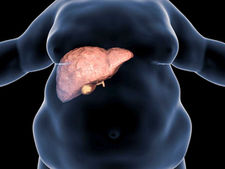
Diagnosis and Treatment Methods in General Surgery
Diagnosis and treatment methods applied in the general surgery outpatient clinic of our hospital are colonoscopy, endoscopy and ERCP. Correct diagnosis is important, it helps correct treatment, and various treatment applications accelerate the detection of diseases. Colonoscopy As a diagnosis and treatment method, colonoscopy is a method applied when there are problems with the intestines and the patient complains of constipation, diarrhea, itching, bleeding and pain in the anal area. This method used for colon cancer screening is a diagnostic method and therefore a major part of the treatment. One or two days before colonoscopy, patients are recommended not to eat solid foods, but rather to consume liquid foods. Laxatives are also used by the patient before the procedure. The aim is to clean the intestines for the operation.
If blood-thinning medications are used 1 week before the procedure, these medications should be discontinued to avoid blood loss due to complications that may occur during the procedure. Before the colonoscopy procedure, the patient lies to the left with both legs drawn to chest level. The patient is administered superficial anesthesia. While the colonoscope device is being delivered to the intestine, it starts from the rectum, which is the last part of the large intestine, and is advanced towards the cecum, which is the entrance part of the large intestine. By injecting air with a colonoscope, the inner surface of the intestine becomes easier to see. The part where the large intestine meets the small intestine is examined, and then the small intestine is also examined. Except for exceptional cases, the process usually takes thirty to forty minutes. As part of the treatment, if dangerous conditions such as polyps are detected during colonoscopy, the physician can intervene with the help of a colonoscope and remove the polyps. If such conditions are detected depending on the patient's complaints, a biopsy can be performed on the patient to provide a more detailed examination for diagnosis. After the colonoscopy, the patient is taken to his room. The patient may experience gas problems due to the gas given to the intestines. At least one day of hospitalization is required because the patient's control after the application is very important. Normal diet can be continued depending on daily routines. If any complaints occur after the application, one should immediately consult their doctor. Gastroscopy (Endoscopy) This method, also known as endoscopy among the public and used to diagnose digestive system disorders, can be applied if patients have stomach ulcers, long-term diarrhea or constipation, tumors and gallbladder stones. When applied as treatment, some special tools can be added to the endoscopy device. Depending on the situation encountered in the patient during endoscopy, polyps are removed, stomach bleeding is stopped, and pathology is taken from tissue that may pose a cancer risk. Before endoscopy, the patient is anesthetized and put to sleep. The endoscope device is a device with a camera at its tip. With this device, the patient's stomach and duodenum can be seen. This method is quite common in detecting existing diseases, if any. If the doctor encounters an unexpected problem, he or she may take samples during the procedure. After the procedure, the patient is checked and if there is no adverse situation, he can continue his normal routine. Since check-ups are important, it is beneficial to stay in the hospital for a day. If the patient experiences problems such as weakness, bleeding, vomiting and shortness of breath, a doctor should be consulted. ERCP In this method, which is used in the diagnosis and treatment of gallbladder diseases and most commonly in gallstone disease, contrast material is given to the patient and the bile duct mouth is entered with a cannula passed through the endoscope, and stones, tumors and anomalies in the bile duct are detected thanks to the contrast material visible on the x-ray. The patient, who is taken to the rest room after the procedure, may experience problems such as nausea and sore throat. Once you start swallowing comfortably, you should eat soft and liquid foods. The transition to solid foods should be slow. There may be medications recommended after the application. Bloating may occur due to the air pumped into the pancreas. When faced with unexpected situations, medical supervision is very important.
FOR INFORMATION AND APPOINTMENT, YOU CAN LEAVE YOUR NUMBER OR ASK OUR EXPERTS
YOU CAN LEAVE YOUR NUMBER FOR INFORMATION AND APPOINTMENT AND ASK QUESTIONS TO OUR EXPERTS



-04.png)
-06.png)
-05.png)
-08.png)
-07.png)























